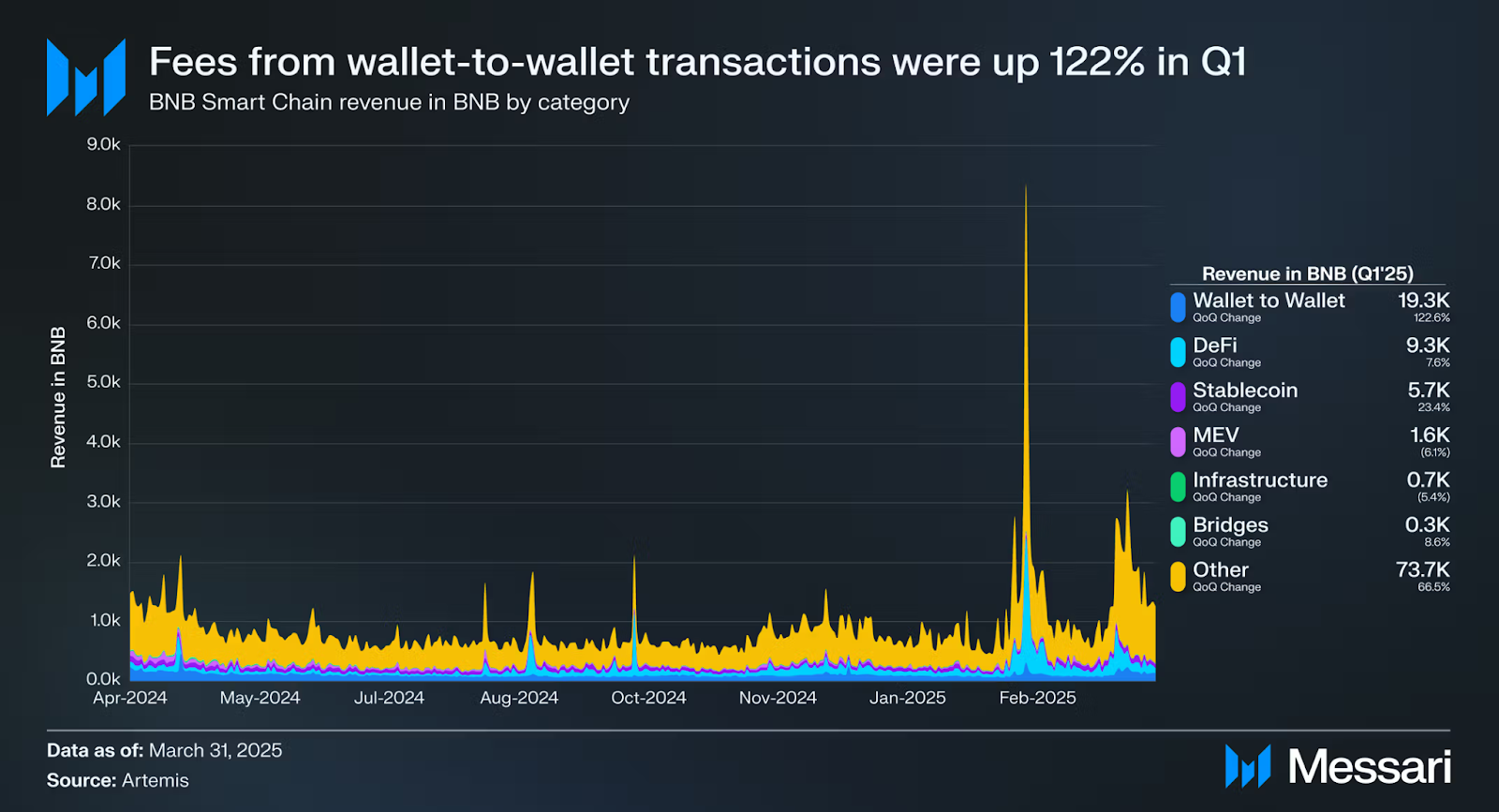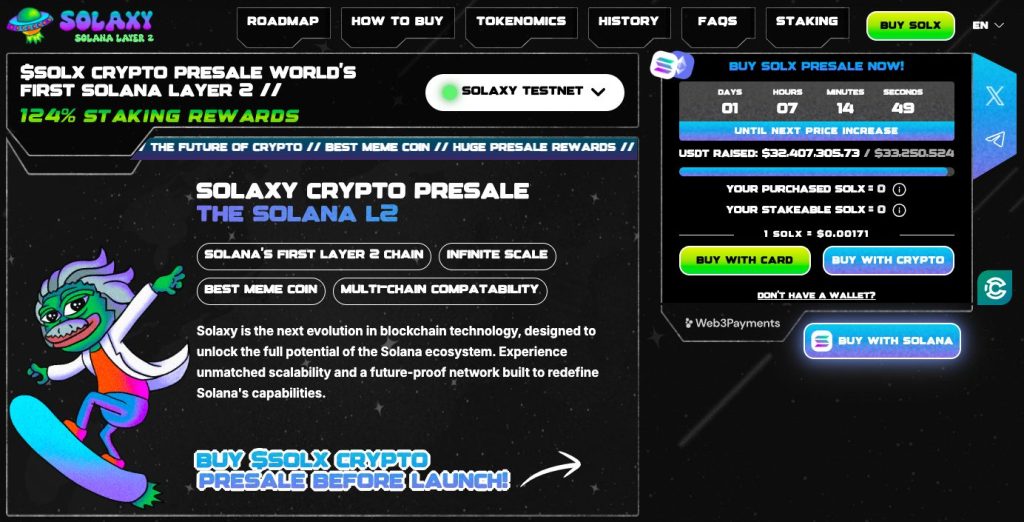
Despite facing a 14.8% decline in market capitalization, the BNB chain concluded the first quarter of 2025 with significant growth and technical achievements.
According to Messari’s comprehensive first-quarter report, the network generated revenue of $708.8 million, representing a quarterly (QOQ) increase of 58.1%.
This surge was driven significantly by an astounding 122.6% increase in wallet-to-wall transaction fees that overtook Defi as a major revenue contributor.
The beginning of February marked a pivotal moment for the network as TST Memecoin’s popularity helped boost user engagement, pushing unique on-chain users to an all-time high of 517 million on February 11th.
This surge in activity has contributed significantly to the revenues of the BNB chain. This increased from 69,500 bnb in the fourth quarter of 2024 to 109,800 bnb in the first quarter of 2025.
Despite BNB’s price depreciation, the chain maintained its position as the fourth-largest cryptocurrency by market capitalization, tracking only Bitcoin, Ethereum and XRP.
This performance fell 29.6% with Ethereum, which saw an astounding 45.2% decline.
The deflation mechanism of the BNB ecosystem remains intact, with the 30th quarter burn burning 1.6 million bnbs ($1.2 billion), contributing to a 4.6% annual deflation rate.
defi, dex, and stablecoins fix a thriving ecosystem
BNB Smart Chain’s on-chain activity saw an average daily transaction increase of 4.9 million from 20.9% QOQ, and an average daily active address increase of 1.2 million, up 26.4%.
Stablecoin transfers and wallet-to-wall transactions make up a large part of this activity, collectively making up 74.4% of all transactions.
Stablecoin usage alone has increased by 28%, bringing 1.2 million transactions per day, with wallet transfers surged from 50.9% to 835,000 per day.
Defi’s involvement was held firmly despite wider market uncertainty. The total USD (TVL) fell 1.2% to $5.3 billion, while the TVL made up of BNB increased by 14.7%.
This rise has overtaken one rival chain, claiming the BNB Smart chain to be the fourth spot in The Total rankings.
Distributed Exchange (DEX) volume experienced significant growth, increasing its QOQ of 79.3% to a daily volume average of $2.3 billion.
Pancakeswap was a dominant force, controlling 91.8% of all DEX activities and supported by a 95.2% increase in trading volume.
Other Defi applications such as Venus Finance and Kernel also played a key role. Despite a slight decline in asset borrowing, Venus, led by TVL, increased dramatically from $81.9 million to over 5 billion, with incentive replenishment.
Stablecoins also promoted ecosystem revenue, generating 5,745.1 bnb in the first quarter, increasing QOQ by 23.4%, but the total revenue share fell to 5.2%.
Defi’s revenues increased to 7.6% QOQ to 9,274.9 bnb, but fell to the second spot in revenue sharing as wallet-to-wallet commissions spiked. Both MEV and infrastructure revenues fell slightly, with bridge fees rising at a modest 8.6% to 275.1 BNB.
Upgrades promote long-term scalability
This operational growth was a series of substantial infrastructure and protocol upgrades.
Launched in the first quarter, Pascal Hard Fork introduced several Ethereum compatibility features, including efficient signature aggregation, gas abstraction, and batch transaction support, including EIP-7702 smart contract wallet and BLS12-381 encryption.
Gas limits have also increased from 120 million to 140 million gas units, allowing the network to support more complex transactional activities. Pascal is the first of three major upgrades scheduled for 2025.
As for BNB prices, BNB is currently consolidated above the $595 support level and is trading nearly $602, close to a simple 100-hour moving average.
After establishing the base at $592, the price recovered to a level of $600 and $605, reaching a high of $611, and returned to retest the $600 level.
The presence of major rising channels and more than 50 stable RSIs suggest bullish momentum, with resistance at $606 and $610.
A successful breakout of over $610 could potentially earn more profits at $620, with potential upward targets of $635 and $650.
However, if BNB cannot overcome its $610 resistance, it could face new sales pressure.
The initial support is $600, followed by the $598 and $592 levels to be stronger. A drop below $592 could cause a bigger drop, potentially pushing the price down to $585 or $580.
Overall, BNB’s short-term orientation depends on whether it can maintain support beyond $598 and break through the $610 resistance.
The post-BNB chain shows strong first quarter growth despite a 15% decline in market capitalization. Messari first appeared on Cryptonews.








